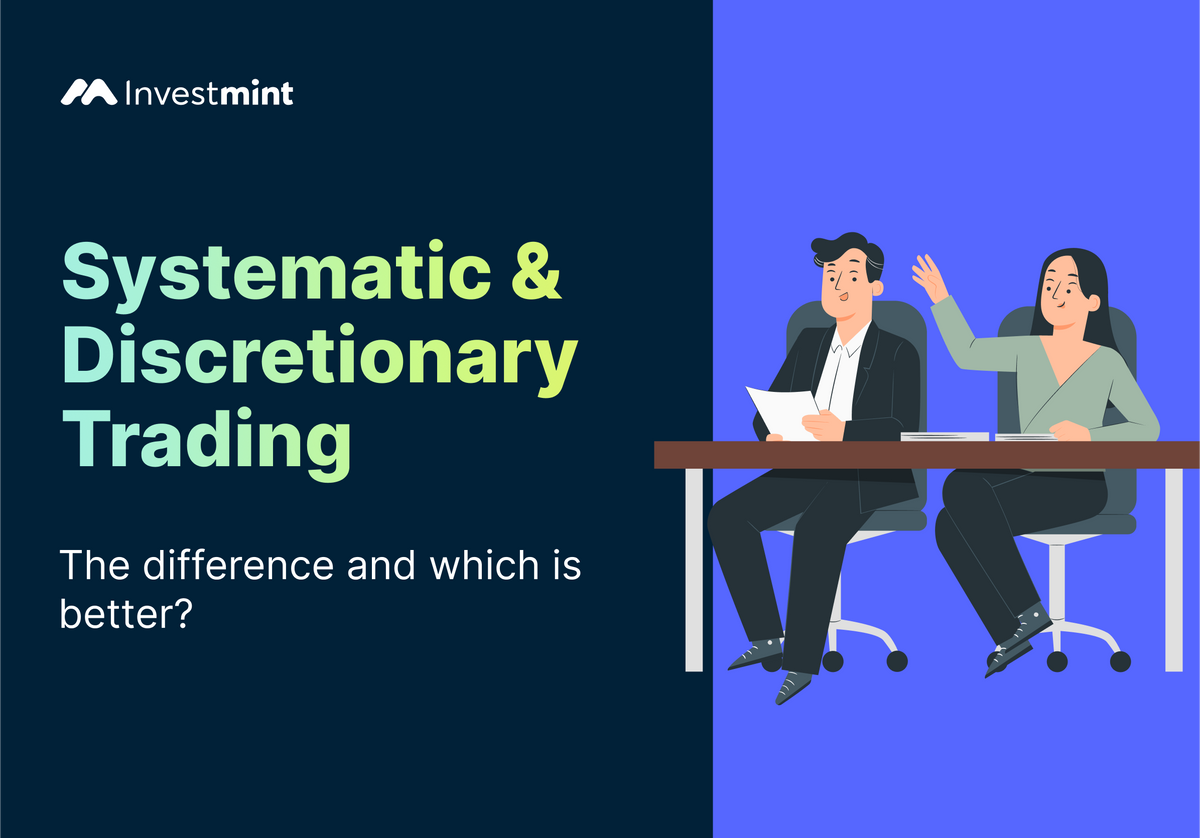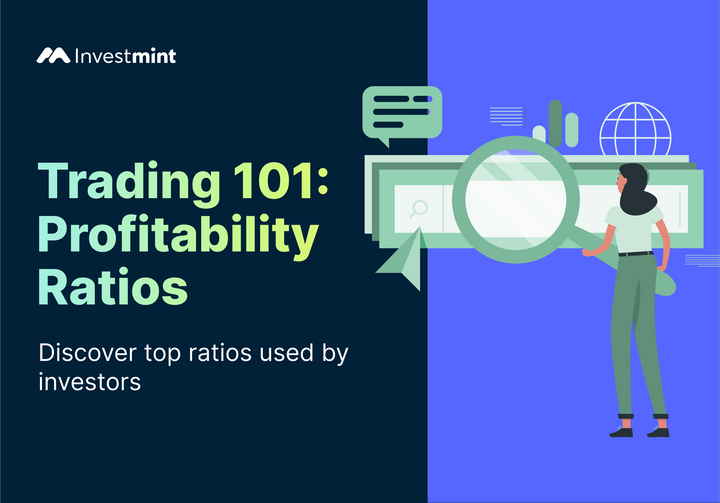Systematic vs. Discretionary Trading: Which Is Better?
Systematic and Discretionary trading both have their own set of advantages and drawbacks. Find out which is the best for you here.

Introduction
Systematic trading and discretionary trading refer to two very different trading approaches when dealing with financial markets. These methodologies represent contrasting philosophies, each with its own set of advantages and considerations.
Systematic trading relies on rules, algorithms, and objective analysis, while discretionary trading emphasises subjective judgment and trader intuition.
Understanding the key differences between these approaches is essential for traders who navigate the markets confidently.
In this blog, we will break down the details of systematic trading and discretionary trading, discuss their pros and cons and also understand the key differences between these two types of trading methods.
What Is Systematic Trading?
Systematic trading functions by trading the market with the help of an algorithmic trading program. Systematic traders use technical analysis of market data such as price and volume to identify market trends, and based on the signals, they take positions to make profits.
Systematic trading involves the creation of trading strategies through the utilisation of computational models, with the goal of automating trades. A systematic trader considers the following factors:
- Defining trade goals
- Risk control measures and rules while trading
- Data cleaning when dealing with new sources of data
Systematic trading does not mean completely automatic trading. It includes both manual and partial automation with the help of computers. This is for traders who want speed, precision and accuracy in their trading decisions.
Systematic trading comes with a lot of benefits:
- Helps avoid risks associated with human emotions.
A trader may become overwhelmed with fear during volatility in the market. He/she might decide based on fear, not a practical approach. This risk can be avoided if we put a trading strategy in place since the decision-making is now rational instead of emotional.
Automated trading systems help utilise profitable situations since they operate faster to identify and execute trades. The automated trading system can identify the most profitable situations. It can buy and sell orders automatically through the trading platform. Hence, chances of missing out on a trade are minimised by faster execution of trading.
- Backtesting a trading strategy is possible using systematic trading.
Testing strategies based on historical data is known as backtesting. It indicates how well a strategy has performed in the past. While it does not guarantee results in the future, it can provide an evaluation of potential strategies. Systematic trading also helps manage the risk of complex portfolios.
What Is Discretionary Trading?
Discretionary trading is next on the list, which relies on the trader's subjective judgment and intuition. Flexibility is the main factor of discretionary trading as it is based on intelligence.
Traders using this approach make decisions based on their experience, market knowledge, and interpretation of current market conditions. This type of trading is based on entering and exiting trades on “feel”. This type of trading is for those who want to control every trading decision.
The main advantage of discretionary trading is that it is adaptive to the existing market conditions. You can avoid trades when you know that their trading system tends to perform poorly in certain specific market conditions. When the strategy performs well in some other conditions, one may increase their position size during such times to make more gains.
However, many traders are not immune to doubting their own guesses. They might be poor in deciding when to trade and when not to. The trader’s psychology plays an important role in discretionary trading. Being too fearful or extremely greedy can damage the profitability of such trading.
Systematic vs. Discretionary Trading
Systematic trading and discretionary trading represent two distinct approaches in the world of financial markets. While both have their merits and drawbacks, they differ significantly in methodology and decision-making processes.
Systematic trading relies on predefined rules, algorithms, and quantitative models to drive trading decisions. Traders employing this approach create systematic strategies that outline specific entry and exit points based on objective criteria.
These strategies are typically developed through rigorous backtesting and optimisation, using historical data to identify patterns and signals. Once established, systematic traders execute trades automatically or semi-automatically, often relying on computer programs or trading platforms.
The key advantage of systematic trading lies in its consistency and discipline.
- By adhering strictly to predefined rules, systematic traders aim to remove emotions and biases from decision-making. This disciplined approach helps avoid impulsive actions driven by fear, greed, or other human emotions. Systematic traders can analyse vast data efficiently, allowing for quick and precise execution of trades.
- Research shows that systematic trading strategies produced an average annual return of 15% over the past five years, exhibiting a relatively low standard deviation of 8%.
- In contrast, discretionary trading strategies showcased a wider range of returns, with an average annual return of 12% and a higher standard deviation of 12%. These statistics highlight the potential of systematic trading to provide consistent and reliable outcomes.
- Regarding the speed of carrying out trades, statistical studies conducted by GHI Market Analysis have shown that systematic traders executed trades on average within 10 milliseconds, while discretionary traders took an average of 50 milliseconds. This significant time difference highlights the importance of speed in capitalising on fleeting market opportunities.
On the other hand, discretionary trading embraces a more intuitive and judgment-based approach. Discretionary traders rely on their experience, market knowledge, and personal judgment to make trading decisions.
They closely monitor market conditions, analyse various factors such as price movements, news events, and economic indicators, and use their discretion to determine entry and exit points.
- Discretionary trading offers more flexibility, as traders can adapt their real-time strategies to exploit emerging opportunities or navigate changing market dynamics.
- One advantage of discretionary trading is the potential for capturing unique opportunities that systematic strategies may not capture. Discretionary traders can factor in qualitative aspects, such as market sentiment or geopolitical developments, that quantitative models may overlook.
- This approach allows for a more nuanced understanding of market conditions and the ability to react swiftly to new information.
However, discretionary trading comes with its own challenges. Emotional biases can play a significant role in decision-making, as traders may be susceptible to fear, greed, or overconfidence. Emotions can lead to impulsive actions, inconsistent decision-making, or deviation from established trading strategies. Managing these biases and maintaining discipline becomes crucial for successful discretionary trading.
Bottom Line
Systematic trading relies on predefined rules and algorithms to drive trading decisions, offering consistency and efficiency. It aims to remove emotional biases and execute trades based on objective criteria.
Discretionary trading, conversely, emphasises intuition, experience, and judgment, allowing for flexibility and the ability to adapt to market dynamics in real-time. It involves analysing a broader range of factors and incorporating qualitative assessments.
While systematic trading provides consistency and disciplined execution, discretionary trading offers adaptability and the potential for capturing unique opportunities. Both approaches have their strengths and weaknesses, and the choice between them depends on the trader's preferences, skill set, and market conditions. For best results, traders can also combine systematic and discretionary trading to achieve maximum potential and maximise gains in financial markets.
Checkout more interesting reads on our blog





